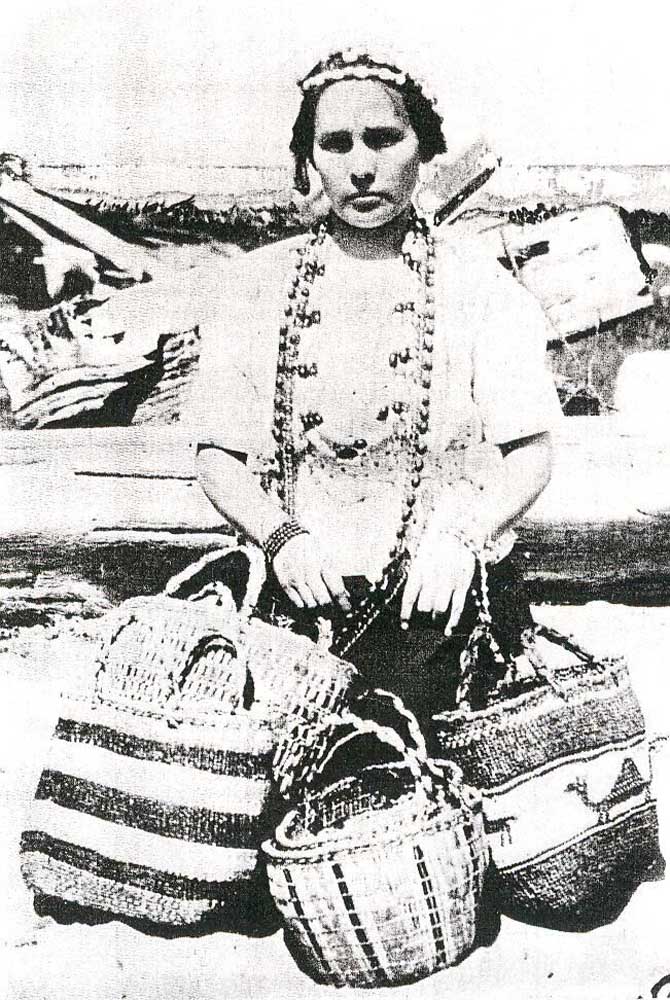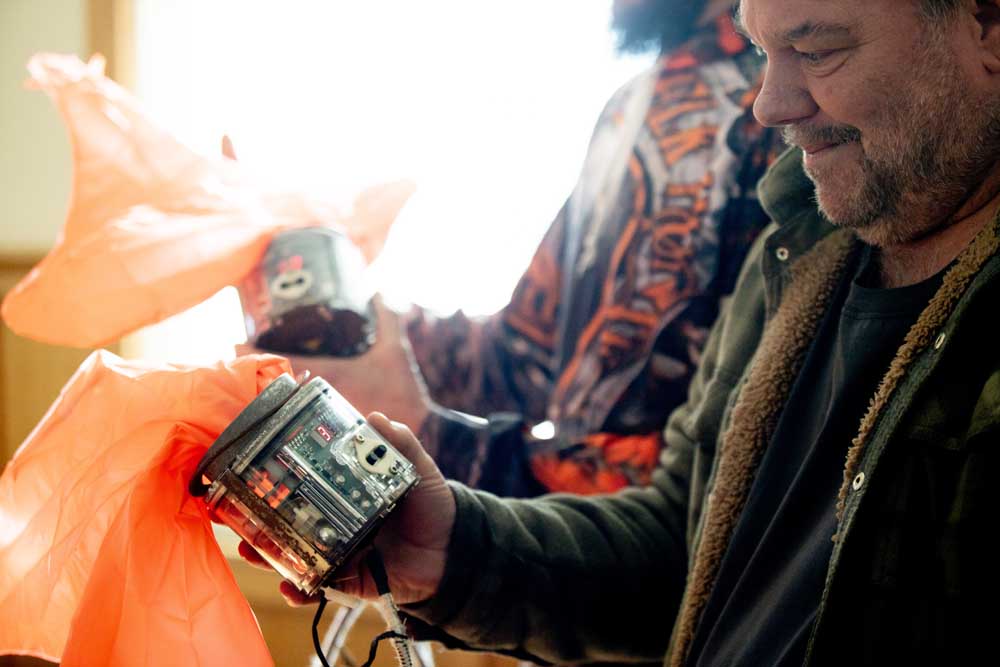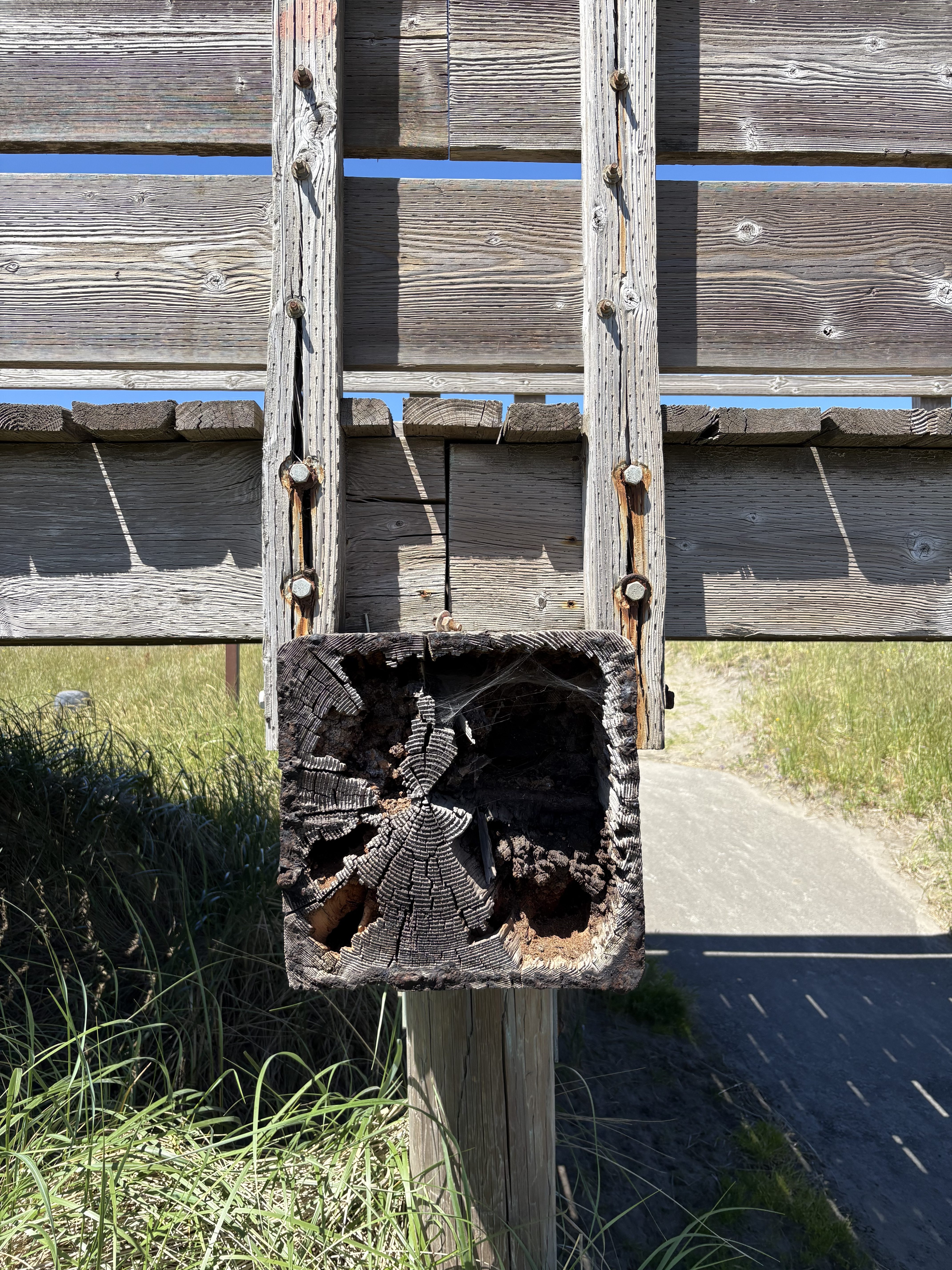Saints or Sinners? Characters of Pacific County: ‘The Last Princess of Pacific County’
Published 3:32 pm Wednesday, January 8, 2025

- Shown here in tribal dress and surrounded by Indian baskets, Myrtle Johnson Woodcock took pride in her dual Chinook/Quinault heritage.
Myrtle Johnson Woodcock 1889 – 1973
Myrtle Johnson was born in Oysterville on April 13, 1889, the year that Washington Territory achieved statehood.
She was the ninth and youngest child of Jane Haguet Johnson, a pioneer school teacher, and Captain “Jimmy Johnson,” a mail carrier — in those days, a job accomplished by a mail boat traveling to communities and hamlets along the rivers and around Willapa Bay. Well-known from Astoria to the Willapa Valley, “he loved the water, spent most of his life upon it, and met death by drowning,” reported the Pacific Journal. Captain Jimmy had drowned in Willapa Bay eight months before Myrtle’s birth.
“Myrtle’s family tree is firmly rooted in Pacific Northwest soil,” wrote editor Larry Weathers in the 1989 Centennial Edition of the Sou’wester, Pacific County Historical Society’s Quarterly Publication. “She was the proud descendent of Chinook and Quinault Indians and Hudson Bay Company employees. Among her ancestors were Chief Uhlahnee of the Chinook band living at Celilo Falls near The Dalles, Chief Hoqueem of the Quinault Tribe (after whom the town of Hoquiam is named), and Captain James Johnson, Sr., retired HBC employee and settler on a 638-acre Donation Land Claim at Ilwaco.
Charlie Nelson, a second-generation Oysterville resident, always referred to Myrtle as “the Last Princess of Pacific County” and remembered her as a highlight of his young boyhood when the high prow canoes arrived at Oysterville with the Indians “in full regalia” to pay homage and bring gifts to this young fatherless babe.
Charlie remembered, especially, that the Quinault chief arrived in the largest and most ornate canoe. At least 40 feet long, it had a wolf’s head emblem high on the prow with a mouth painted in bright red (the base being clay obtained from the river bank near Naselle) and the head ebonized with charred rush lampblack. Charlie was not quite six at the time and never forgot his frustration in not being able, even by stretching and on tip-toes, to touch that carving. “But,” he always added, “I was in too much awe to ask to be lifted up.”
When her mother married William Howard of South Bend, Myrtle moved with the family to that community where she grew up and attended school. “About 1907,” according to her granddaughter, Judy Little of Eureka, California, “Myrtle married Frederick Woodcock, who supported their family of eight children — four boys and four girls — by farming and raising cattle. Myrtle, according to Judy, “was an excellent seamstress” and not only kept her growing family beautifully clothed, “but also sewed for most of South Bend! She could take an old coat, turn it inside out, and make it look like a brand new one!”
Both Myrtle and Fred were charter members of the Pacific County Historical Society that was established in 1950. Myrtle was deeply interested in her own dual heritage and throughout her lifetime wrote a number of poems retelling Indian legends or recalling memories of the pioneer days on Willapa Bay. Several were published in The Sou’wester.
One of Myrtle’s first published works appeared in the April 28, 1918 issue of the South Bend Journal. It was a stirring call to arms imploring Native Americans to fight the Kaiser because:
Those old braves who fought in darkness
They could scarcely see the right
But the message they would send you
”For your country go and fight!”
Myrtle was active in the Chinook Tribe, serving as secretary for many years and participating in a Native American Congress to represent the Chinooks. One of Judy’s most precious memories is of her grandmother Myrtle standing atop a giant drum and lifting her arms to the Great Spirit at the dedication of Chinook Point to Washington State Parks in 1951. The property once belonged to Myrtle’s ancestor, Comcomly.
Myrtle is buried next to her husband Fred at the Fern Hill Cemetery in Raymond.









